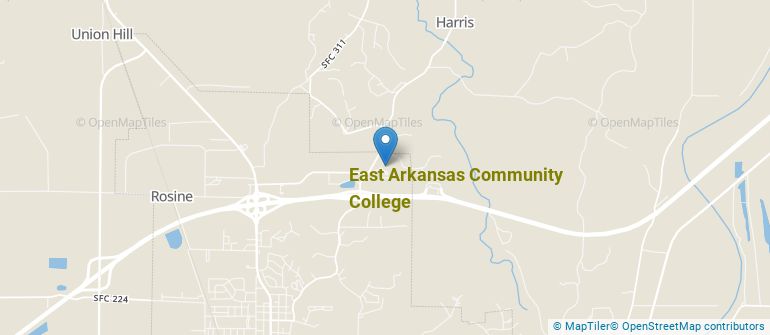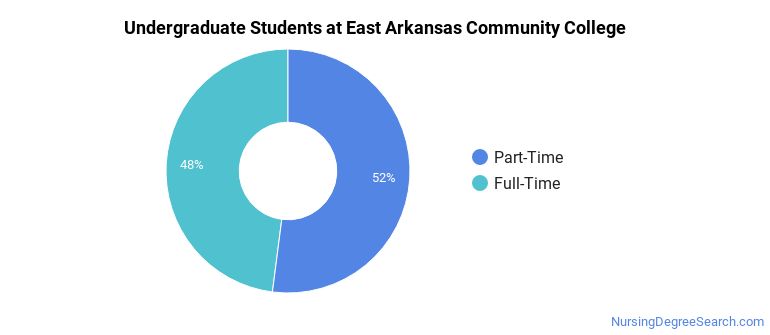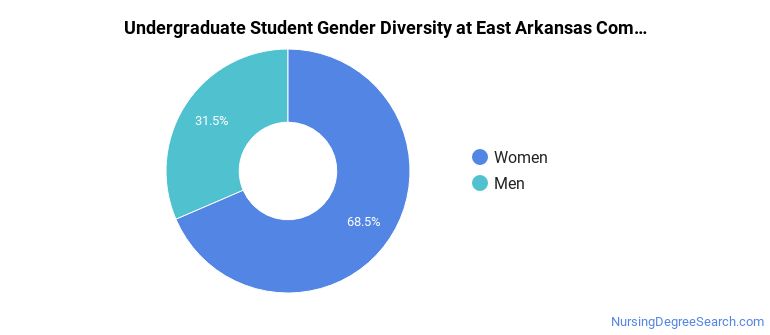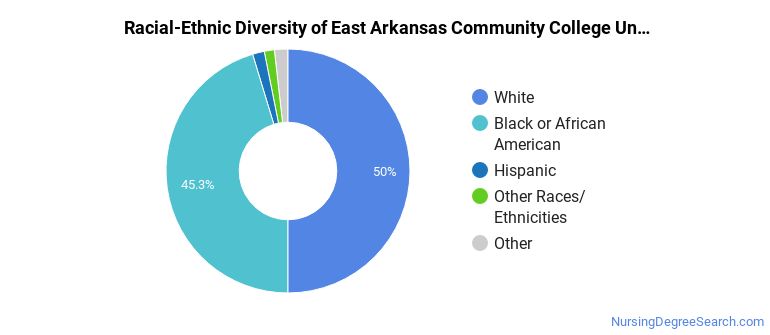East Arkansas Community College Nursing Programs
East Arkansas Community College is a public institution located in Forrest City, Arkansas. Forrest City is a good match for students who enjoy small-town life.
Where Is East Arkansas Community College?

Contact details for East Arkansas Community College are given below.
| Contact Details | |
|---|---|
| Address: | 1700 Newcastle Rd, Forrest City, AR 72335-2204 |
| Phone: | 870-633-4480 |
| Website: | www.eacc.edu |
How Do I Get Into East Arkansas Community College?
You can apply to East Arkansas Community College online at: https://my.eacc.edu/ICS/Admissions/Admissions_Home.jnz
Can I Afford East Arkansas Community College?
Student Loan Debt
While almost two-thirds of students nationwide take out loans to pay for college, the percentage may be quite different for the school you plan on attending. At East Arkansas Community College, approximately 4% of students took out student loans averaging $5,310 a year. That adds up to $21,240 over four years for those students.
East Arkansas Community College Undergraduate Student Diversity

Gender Diversity
Of the 448 full-time undergraduates at East Arkansas Community College, 31% are male and 69% are female.

Racial-Ethnic Diversity
The racial-ethnic breakdown of East Arkansas Community College students is as follows.

| Race/Ethnicity | Number of Grads |
|---|---|
| Asian | 4 |
| Black or African American | 203 |
| Hispanic or Latino | 7 |
| White | 224 |
| International Students | 4 |
| Other Races/Ethnicities | 6 |
East Arkansas Community College Nursing Concentrations
The table below shows the number of awards for each concentration.
| Major | Associate’s | Undergraduate Certificate | TOTAL |
|---|---|---|---|
| Licensed Practical/Vocational Nurse Training | 0 | 17 | 17 |
| Registered Nursing | 10 | 0 | 10 |
| Nursing Assistant/Aide and Patient Care Assistant/Aide | 0 | 0 | 0 |
| TOTAL | 10 | 17 | 27 |
References
*The racial-ethnic minorities count is calculated by taking the total number of students and subtracting white students, international students, and students whose race/ethnicity was unknown. This number is then divided by the total number of students at the school to obtain the racial-ethnic minorities percentage.
More about our data sources and methodologies.
